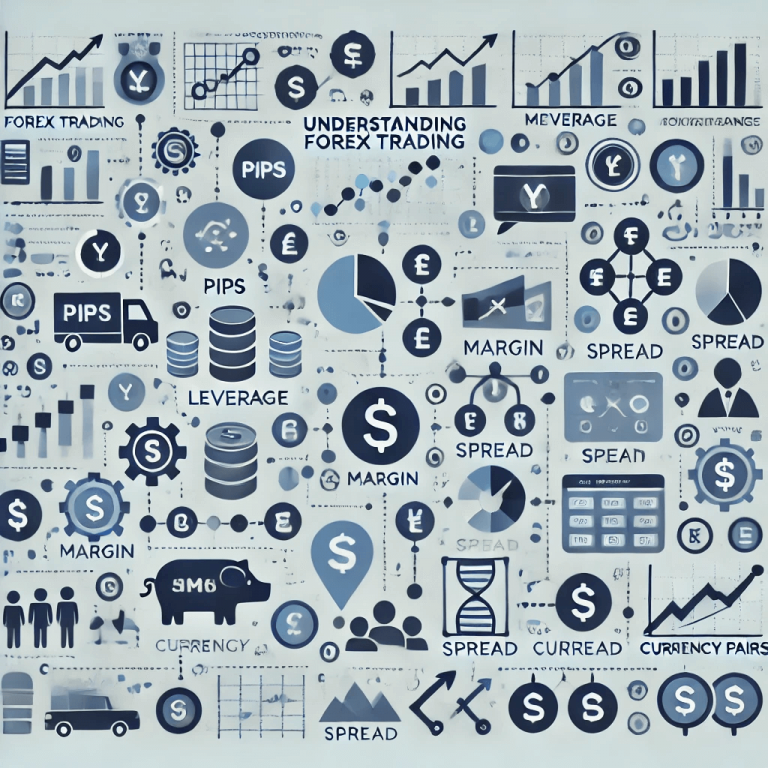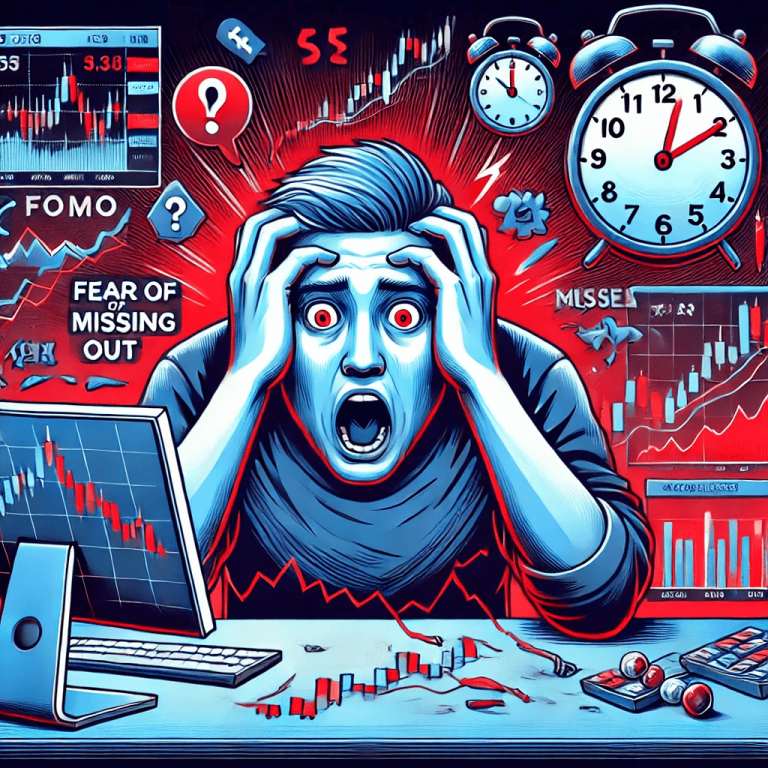Risk management is one of the most important elements of successful Forex trading.
Many investors focus on profit-generating strategies; however, it is
the control of losses that determines long-term success. Forex, as a
market characterized by high liquidity and significant volatility,
carries a range of risks that can quickly lead to capital loss.
Table of Contents
- Introduction
- What is Risk Management in Forex Trading?
- Key Principles of Risk Management in the Forex Market
- Psychology and Emotions in Risk Management
- Tools and Technologies Supporting Risk Management
- Examples of Risk Management Strategies Employed by Professional Traders
- Summary
Key Information
- Loss control determines long-term success in the Forex market.
- Defining the maximum acceptable loss per trade is crucial (1-2% of capital).
- Stop-Loss and Take-Profit orders help automatically protect capital.
- Portfolio diversification reduces the risk of excessive losses.
- Technologies, such as automated trading systems, support informed decision-making.
- Psychology and emotional control have a huge impact on investment outcomes.
What is Risk Management in Forex Trading?
Risk management in Forex trading is a collection of methods and tools used to protect capital from adverse price movements. In practice, this means controlling potential losses through proper trade planning, setting protective orders, and applying effective capital management principles.
The greatest threats that traders face in the Forex market include, among others:
financial leverage – enables opening large positions with a relatively small deposit, which can lead to abrupt losses;
market volatility – sudden fluctuations in exchange rates, especially during the release of macroeconomic data, can trigger unpredictable price movements;
psychological errors – emotions such as fear, greed, or lack of discipline often lead to ill-considered decisions.
To minimize risk, traders employ various capital protection strategies, such as properly setting stop loss levels, managing position size, and diversifying the portfolio.
Key Principles of Risk Management in the Forex Market
Effective risk management is the foundation of long-term success in the Forex market. Even the best investment strategy does not guarantee profits if it is not accompanied by proper control over potential losses. Here are the most important principles:
Determining the Acceptable Level of Risk
One of the fundamental steps in risk management is determining the maximum loss that an investor is willing to accept on a single trade. The accepted rule is that the risk on one position should not exceed 1-2% of the total capital. This way, even a series of unsuccessful trades will not quickly deplete the account.
It is also important to maintain a proper balance between potential profit and risk. For this purpose, the R:R (Risk-to-Reward) ratio is used, which defines the relationship between risk and expected profit. A good practice is to open positions where the potential profit is at least twice as high as the risk (e.g., 1:2 or 1:3).
Using Stop-Loss and Take-Profit Orders
Stop-Loss (SL) and Take-Profit (TP) are orders with specifically defined price levels at which a trade will be automatically closed, thereby helping to control its outcome.
- Stop-Loss automatically closes a position when the price reaches a specified loss level, helping to prevent further declines in capital value;
- Take-Profit works in reverse – closing the position when the price reaches the designated profit level.
Setting the Stop-Loss level should be aligned with the investment strategy. It should not be placed too close to the current price to avoid accidental closure due to temporary market fluctuations. Conversely, a Stop-Loss that is too wide may lead to excessive losses.
The most common mistakes in setting Stop-Loss include:
lack of a Stop-Loss – leaving a position unprotected exposes it to significant losses in the event of a sudden price move;
moving the Stop-Loss unfavorably – banking on a trend reversal often results in even larger losses;
setting the Stop-Loss at random levels – instead, it is advisable to analyze support, resistance, and market volatility.
| Order | Function | Benefits |
|---|---|---|
| Stop-Loss | Automatically closes the position upon reaching a specified loss | Protects capital from abrupt declines |
| Take-Profit | Automatically closes the position upon reaching the set profit level | Realizes profits according to the investment plan |
Diversification of the Investment Portfolio
Forex differs from traditional stock or bond markets, yet diversification also has its application here. It involves distributing capital across various currency pairs and investment strategies, thereby reducing the risk arising from unforeseen movements in a single position.
Some currency pairs are highly correlated – for instance, EUR/USD and GBP/USD often move in a similar direction. Investing in multiple highly interrelated pairs is not an effective diversification strategy. It is worthwhile to analyze currency correlations and incorporate them into your strategy.
Managing Financial Leverage
Leverage is a tool that enables controlling larger positions with relatively little capital. Although it increases potential profits, it also carries the risk of abrupt losses, especially when used imprudently.
Leverage functions as a “loan” from the broker – for example, a leverage of 1:100 means that with a deposit of 1,000 USD, a trader can open a position worth 100,000 USD. However, even a minor price movement can lead to substantial losses. According to data from the Bank for International Settlements, the average daily turnover on the Forex market is about 6 trillion dollars (Source: BIS, https://www.bis.org).
| Strategy | Description |
|---|---|
| Determining Risk Levels | Defining the maximum loss per trade (1-2% of capital) |
| Diversification | Allocating investments among different currency pairs and strategies |
| Utilization of Technology | Employing automated trading systems and technical indicators |

Psychology and Emotions in Risk Management
Psychology plays a significant role in Forex investing. Fear, greed, excitement, or frustration can distort the perception of market conditions and lead to misjudgments. For example, the fear of loss may cause a trader to close a position prematurely, missing out on potential gains. Conversely, greed can result in excessive positions and a disregard for risk. Excitement following a series of successful trades may cause a trader to overlook capital management principles, which further increases risk.
Emotions can alter the way we perceive the market, and a lack of control over them can lead to decisions based on impulses rather than cold analysis. The Forex market presents several psychological traps that can lead to unfavorable investment decisions:
confirmation bias – it involves seeking information that confirms our pre-existing market opinion while ignoring signals that might contradict it. In this way, investors often turn a blind eye to risk and maintain positions even as market conditions change;
fear of loss – this is a powerful emotion that may prevent a trader from making decisions when markets are uncertain. It often leads to premature position closures, even if the long-term trend remains intact;
overconfidence effect – it can occur after several successful trades, leading a trader to ignore risk management principles and make overly risky decisions;
loss aversion – a tendency to avoid losses at all costs, which can result in avoiding trades that have long-term profit potential but come with some risk.
As Dr. Emily Carter, an American financial markets expert, noted, “Proper risk management transforms the Forex market, enabling investors to focus on long-term goals” (Source: Reuters). To effectively manage emotions, traders should implement strategies that help maintain discipline and resist impulsive decisions.
Firstly, a trading plan is crucial – a detailed document that outlines investment objectives, risk management rules, and the conditions for opening and closing trades. A plan helps avoid making decisions based on emotions. Closely related is maintaining a trade journal. By recording each trade, a trader can analyze their decisions and identify recurring patterns during stressful periods. This practice aids in reflection and helps prevent future mistakes.
It is also important not to forget the need to disconnect from trading occasionally. Regular breaks allow one to rest and recharge. Continuous engagement without respite may lead to burnout, which in turn results in poor investment decisions.
Tools and Technologies Supporting Risk Management
The Forex market offers a range of tools and technologies that help traders manage risk. Automated trading systems, technical indicators, and fundamental analysis are key elements that support more informed investment decisions.
Automated trading systems, also known as bots, eliminate emotions from the decision-making process by operating according to predetermined rules and reacting to specific market changes. Due to their speed and precision, they can effectively respond to market fluctuations, minimizing the risk resulting from delayed trader reactions. However, it is important to remember that their effectiveness depends on proper programming, and their operation is not free of risk, especially when markets undergo rapid changes.
Examples of technical indicators used by traders include:
- ATR (Average True Range) – measures market volatility, which helps in setting Stop-Loss levels;
- RSI (Relative Strength Index) – measures the strength and momentum of price movements, indicating whether a currency is overbought or oversold;
- MACD (Moving Average Convergence Divergence) – facilitates assessing the strength of a trend and potential moments of directional change.

An important element in risk management is also fundamental analysis, which enables forecasting market changes based on macroeconomic data, monetary policy, and geopolitical events. Analyzing economic reports, central bank decisions, and political developments allows for predicting currency fluctuations and assessing the risk associated with specific trades. When combined with technical analysis, it provides a more comprehensive view of the market.
Examples of Risk Management Strategies Employed by Professional Traders
Professional traders use a variety of risk management strategies to minimize losses and maximize profits. One of the most commonly used techniques is the rule of setting a percentage risk per trade, whereby a trader does not risk more than 1-2% of their capital on a single position. This approach ensures that even in the case of a series of losing trades, the total loss is limited, allowing the trader a chance to rebuild their capital. According to OECD data, over 70% of novice traders experience losses over the long term (Source: OECD, https://www.oecd.org).
Another popular strategy is the use of Stop-Loss and Take-Profit orders, which allow for the automatic closure of positions when the price reaches a specified level. Stop-Loss protects against larger losses, while Take-Profit helps to realize gains at predetermined moments. Professionals often adjust these levels based on market volatility, employing indicators such as ATR, which measures average price fluctuations.
Professionals often utilize different trading styles (e.g., swing trading, day trading) as well as various currency pairs to mitigate the risk associated with the high volatility of a single instrument.
Another popular technique is the application of so-called “multi-stage strategies,” which involve breaking a single trade into several smaller trades, thereby allowing for better risk management and the opportunity to adjust positions during its duration. This is particularly useful in dynamic market conditions, where the speed of reaction is key.
Professional traders also pay close attention to trading psychology, treating risk as an inherent element of investing and avoiding emotional decisions. Regular market breaks, error analysis, and continuous strategy refinement are integral components of their approach to risk management.
Summary
Risk management in the Forex market is a crucial element for achieving investment success. Professional traders employ various strategies, such as setting a percentage risk per trade, using Stop-Loss and Take-Profit orders, diversifying the portfolio, and breaking positions into smaller trades. Additionally, they utilize technical tools to more accurately assess risk. Proper control of emotions, a well-defined trading plan, and error analysis are equally important in maintaining discipline and avoiding impulsive decisions. With these techniques, traders can effectively minimize risk and boost their chances for long-term profit.




